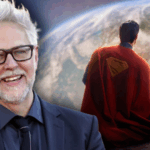Uniting’s new diversity and inclusion strategy launched on 14 September, over Zoom.
The strategy document is the result of around a year’s work, which included consultations with Uniting’s clients and contributions by multiple working groups. The strategy lays out Uniting’s three-year roadmap for diversity and inclusion. During a one hour presentation, several speakers pointed out that diversity and inclusion were part of the Uniting Church DNA.
Uniting’s Tracey Burton kicked off proceedings by acknowledging the Gadigal people of the Eora nation.
The diversity and inclusion strategy, she said, “goes back to the origins of the Uniting Church if we go back to the statement to the nation.”
That statement, released at Union in 1977, committed the new Uniting Church to “work for the eradication of poverty and racism in our society.”
“Diversity and inclusion is very much in the DNA of Uniting,” Ms Burton said.
“They are important features of everything that we do at Uniting.”
Speaking to Uniting’s clients had been an experience that, according to Ms Burton, had told the organisation that, “we can do more.”
“In these COVID times, we’ve learnt that…tapping into diversity, hearing those important voices, is more important than ever,” she said.
“We’re looking to build a culture where we…have an antenna for those cultural biases.”
“The role of leadership is going to be absolutely critical.”
The launch presentation included multiple videos, including one that showcased some of Uniting’s programs
Tammy Pararajasingham is Uniting’s Head of Social Impact.
“Uniting has grown from the committed work of the Uniting Church,” she said.
Uniting, she said, was proud of its efforts to work with groups otherwise marginalised in Australia, pointing to how Uniting became the first faith based group to get the rainbow tick of accreditation.
“Too many people are still excluded and discrimination does exist,” Ms Pararajasingham said.
“We need to ask ourselves some tough questions.”
The presentation then featured comments from some of Uniting’s clients who shared their experience of the consultation process.
One of the ongoing themes of the presentation was that discrimination exists everywhere, including at some points within Uniting itself and that the organisation’s new strategy would need to work in an ongoing way to actively combat factors such as unconscious bias.
Lisa Annese CEO of the Diversity Council of Australia (DCA) was the event’s keynote speaker. In her address, Ms Annese outlined what made for an inclusive workplace, and the benefits involved.
“An inclusive workplace is one where there is respect,” Ms Annese said.
“Where there’s also a connection between individuals.
Beyond this, she suggested, people needed to feel as though they made a difference and that individuals needed to feel like they could progress and have opportunities.
“All four of those things need to be in place in order for organisations to rank highly in terms of the [practices of inclusion],” Ms Annese said.
“Highly inclusive workplaces are ten times more likely to be highly effective.”
“We know that if you work in an inclusive team, you’re…four times more likely to want to stay with your employer.”
Ms Annese said that organisations needed to work to directly address unconscious biases, and resource these efforts.
“Whilst the focus on activity can be important, it’s critical to link that to the business outcome you’re trying to achieve and…how do your resource this?”
“It’s not any one thing. It’s a number of things working together.”
This, she said, meant ensuring that organisations were respectful, collaborative, provided meaningful and valuable work, and gave the opportunity to progress and advance in some way.
Uniting’s Diversity and Inclusion Lead, Fiona Krautil, said that the organisation would be applying a diversity and inclusion lens to everything that they did over the next few years, including areas such as procurement, which would involve such considerations as working with indigenous providers.
Transforming hospitality
Moderator Simon Hansford closed out the session with his reflections.
“I feel very proud of the church and proud of Uniting and how the diversity and inclusion conversation is progressing,” he said.
In a short address, Rev. Hansford said that there was a difference between being friendly, being welcoming, and providing hospitality. In speaking to congregations across the Synod, he noted that providing hospitality had the ability to transform people, and that Uniting were aiming at this with their new three year strategy.
“In the Uniting Church, welcome and inclusion… reflect the faith we have in Jesus Christ,” Rev. Hansford said.
“It means paying attention to those who society has…pushed to the sides.”
“The church has [tried to learn] what it means to be radically inclusive.”
“I want to stress this is a journey. We haven’t arrived there yet.”
“The diversity and inclusion strategy of Uniting is part of who we are as a church.”
The Zoom event was recorded and Uniting will make it available at a later day, pending editing.
Uniting’s Diversity and Inclusion Strategy for 2020-2023 is available online here.













1 thought on “Part of our DNA: Uniting launch new Diversity and Inclusion strategy”
Being friendly, being welcoming, and providing hospitality are important and need to be encouraged as a follow-on to the core message of the Gospel as stated by Jesus Christ, and which is inclusive of everybody: “Repent and believe the Gospel, for the Kingdom of God is at hand”.